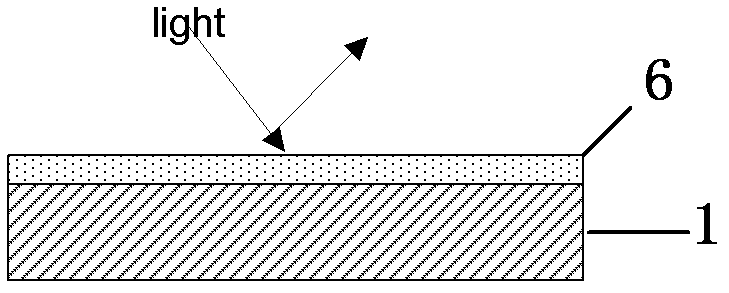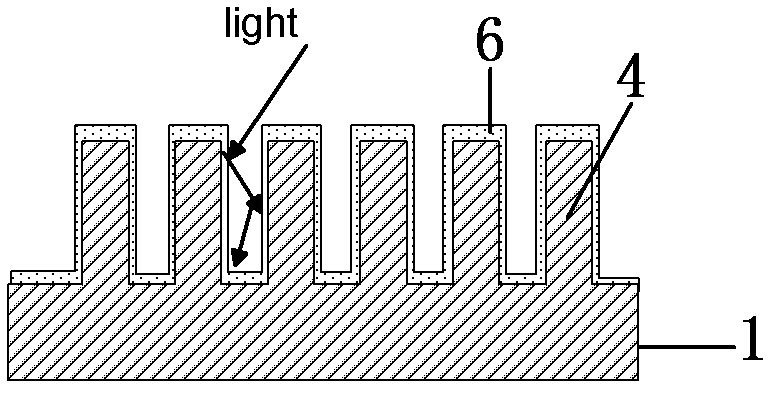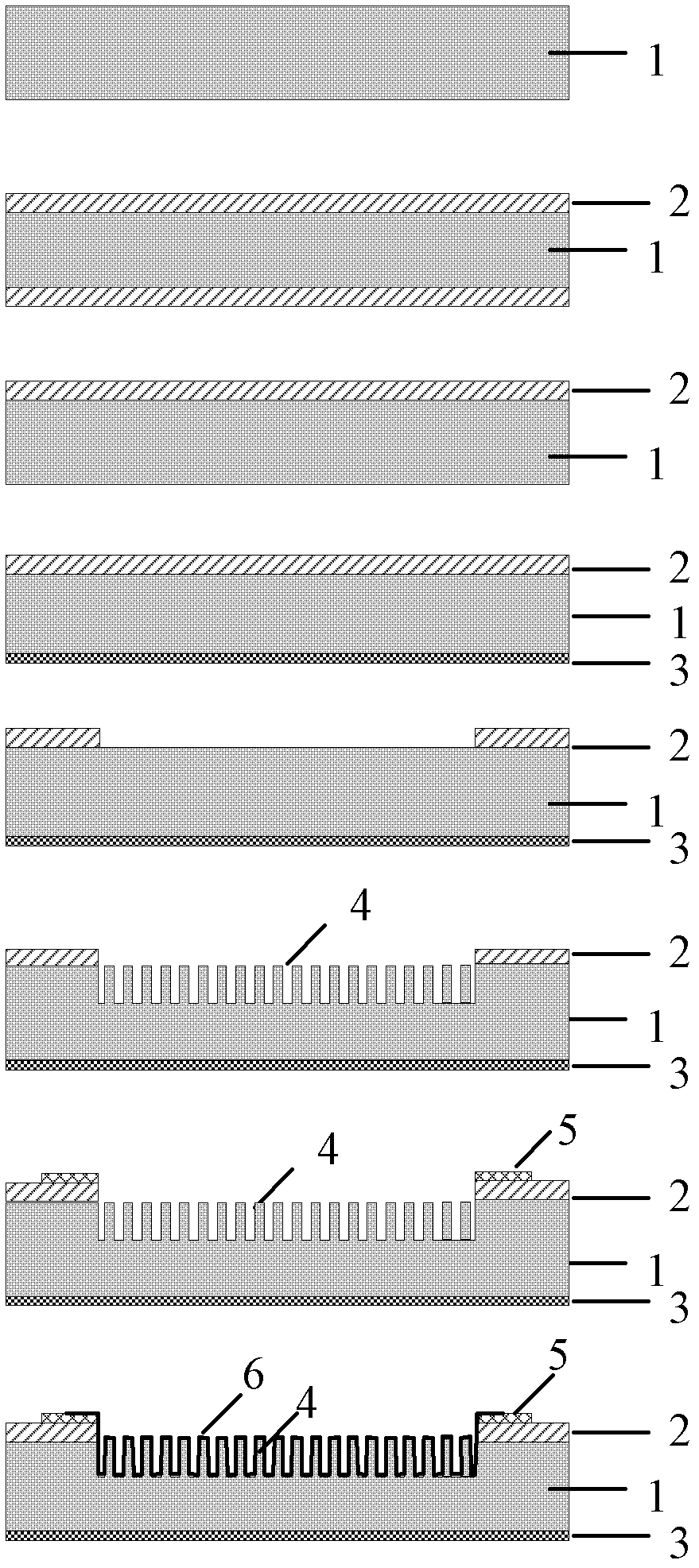Graphene/silicon pillar array Schottky junction photovoltaic cell and manufacturing method thereof
A Schottky junction, photovoltaic cell technology, applied in the field of solar cells, can solve the problems of energy loss, ineffective use of incident light energy, etc., and achieve the effects of small reflection coefficient, easy mass production, and improved efficiency
- Summary
- Abstract
- Description
- Claims
- Application Information
AI Technical Summary
Problems solved by technology
Method used
Image
Examples
Embodiment 1
[0043] When the graphene / silicon column array Schottky junction photovoltaic cell is produced in this embodiment, the n-type (100) single crystal silicon substrate 1 with a resistivity of 2-3Ω·cm is first thermally oxidized, and a 300nm thick SiO is grown by thermal oxidation. 2 As SiO 2 The isolation layer 2, the oxide layer on the back of the silicon substrate 1 is removed by wet etching, and then a metal electrode is sputtered on the back of the single crystal silicon substrate 1 as the back electrode 3. The back electrode 3 has a Ti / Pd / Au stack structure, Its thickness is 10nm, 5nm, 30nm. Wet etching SiO 2 The isolation layer 2 forms a window to expose the silicon surface. The silicon surface is etched by the RIE method to form the silicon column array 4, and the etching time is 60 seconds. The diameter of the silicon pillar is 2 microns, the height is 200 nanometers, and the spacing is 2 microns. Finally, the metal front electrode 5 is prepared around the isolation layer wi...
Embodiment 2
[0045] This embodiment produces a graphene / silicon column array Schottky photovoltaic cell, which is similar to the first embodiment, except that the single crystal silicon substrate 1 is etched by the ICP method to form a silicon column array, and the height of the silicon column is 620 nm.
Embodiment 3
[0047] This embodiment produces a graphene / silicon column array Schottky photovoltaic cell, which is similar to the first embodiment, except that the single crystal silicon substrate 1 is etched by the ICP method to form a silicon column array, and the height of the silicon column is 915 nm.
PUM
| Property | Measurement | Unit |
|---|---|---|
| electrical resistivity | aaaaa | aaaaa |
| thickness | aaaaa | aaaaa |
| crystal orientation | aaaaa | aaaaa |
Abstract
Description
Claims
Application Information
 Login to View More
Login to View More - R&D
- Intellectual Property
- Life Sciences
- Materials
- Tech Scout
- Unparalleled Data Quality
- Higher Quality Content
- 60% Fewer Hallucinations
Browse by: Latest US Patents, China's latest patents, Technical Efficacy Thesaurus, Application Domain, Technology Topic, Popular Technical Reports.
© 2025 PatSnap. All rights reserved.Legal|Privacy policy|Modern Slavery Act Transparency Statement|Sitemap|About US| Contact US: help@patsnap.com



